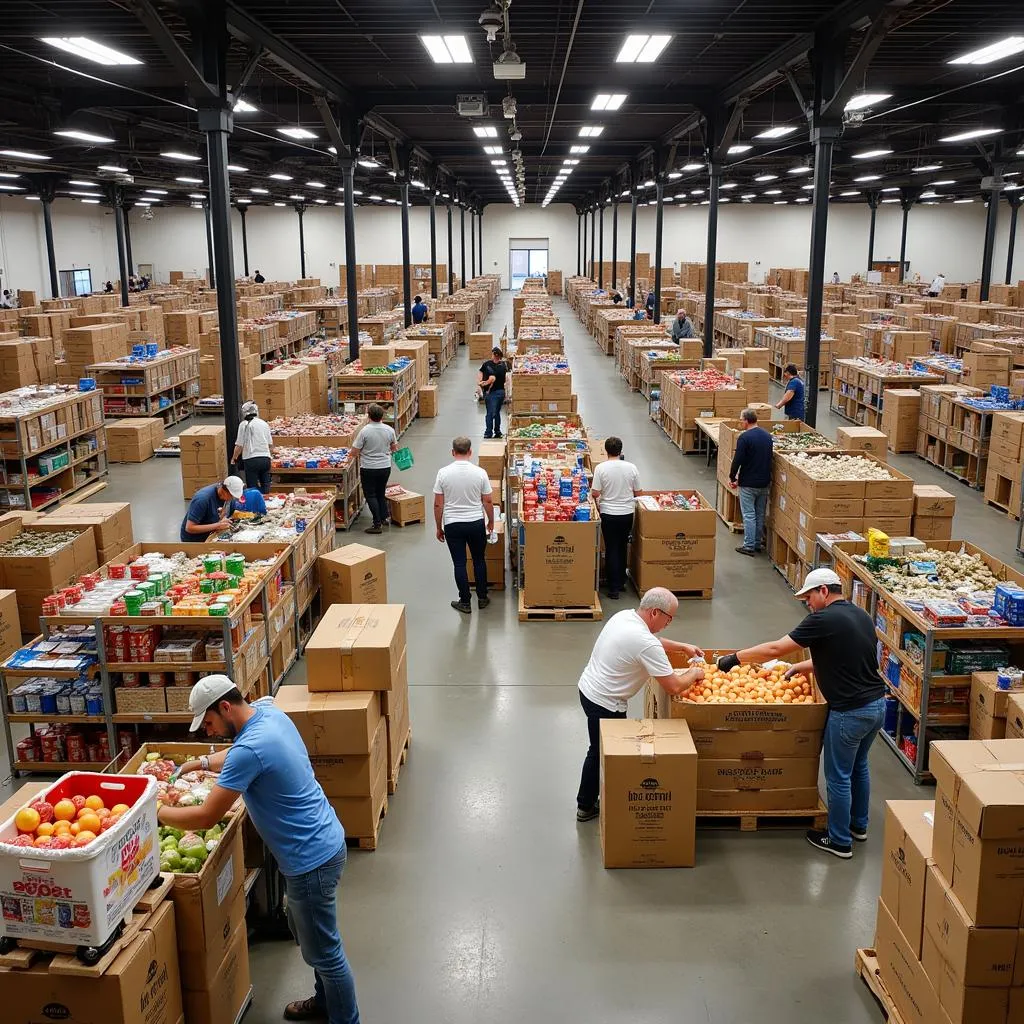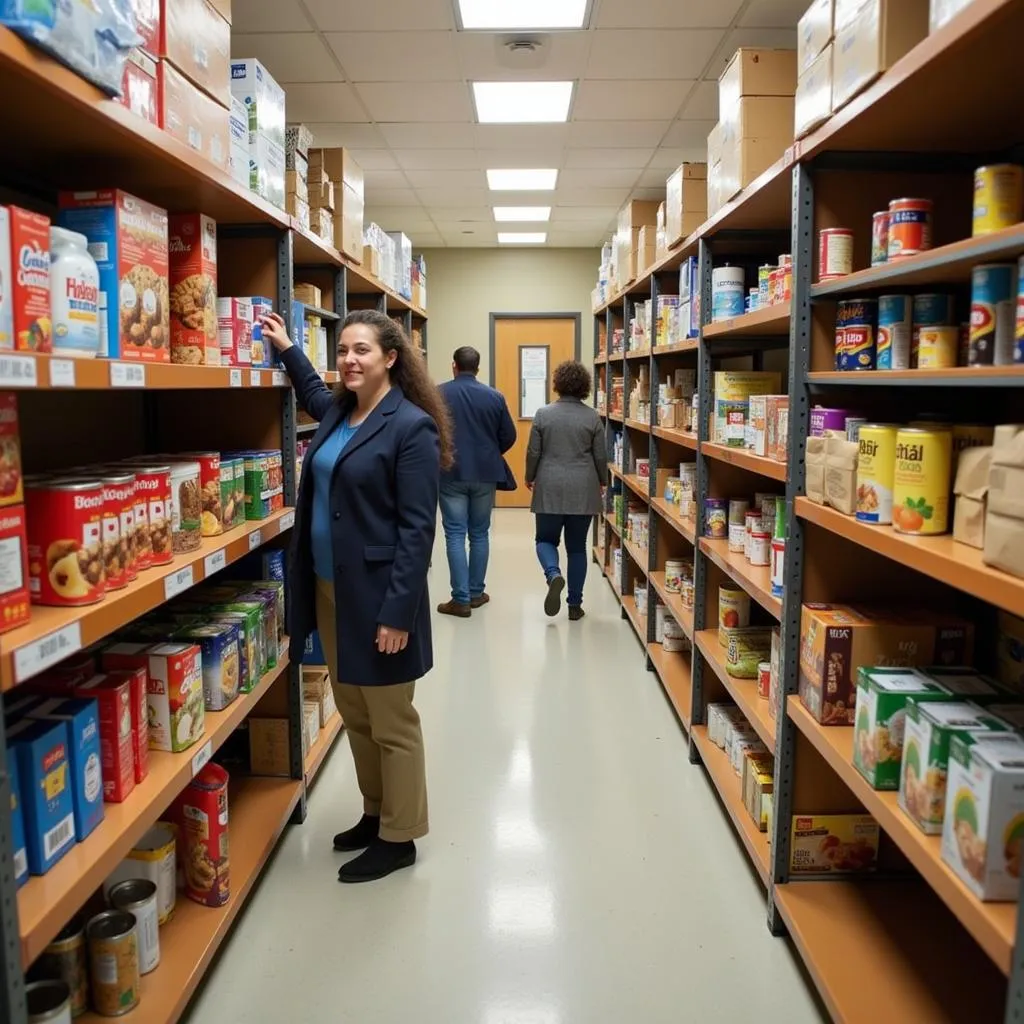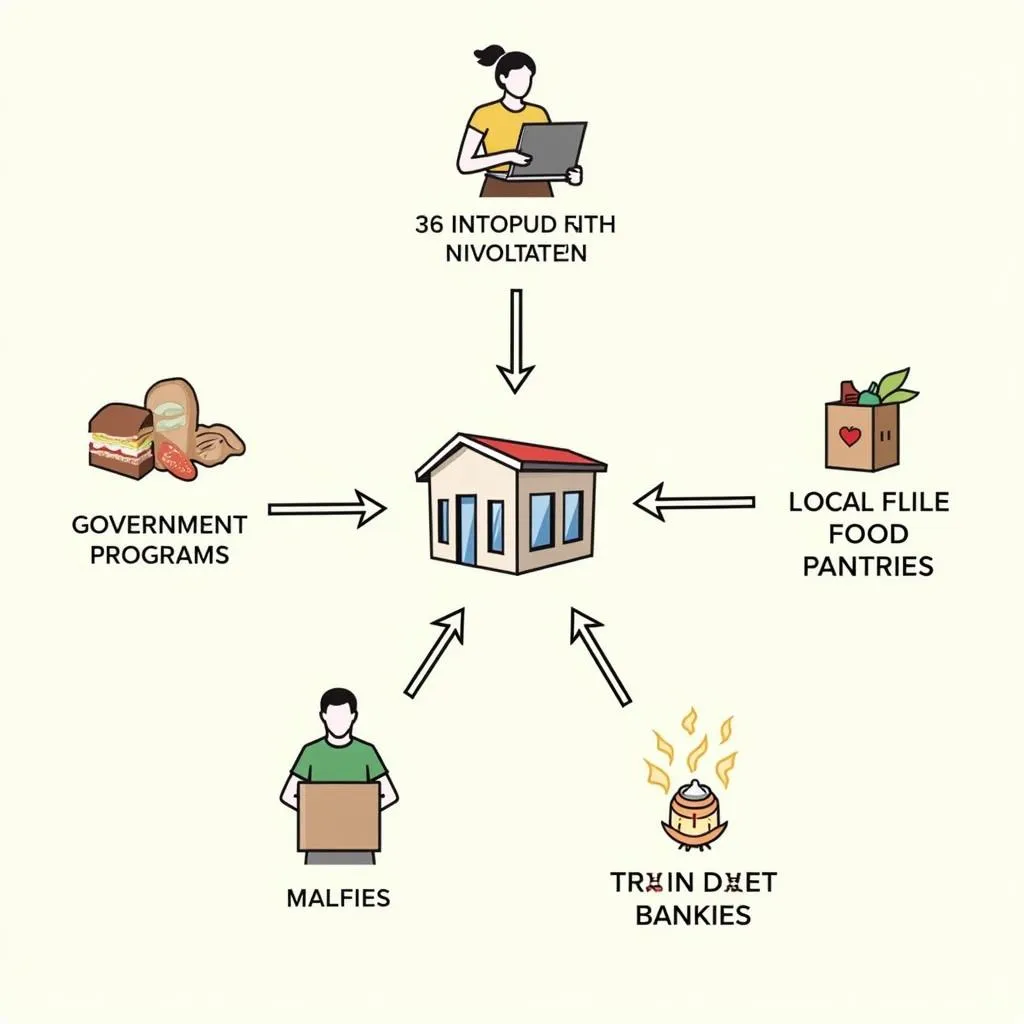Understanding the difference between a food pantry and a food bank can be confusing. While both play a vital role in combating hunger, they have distinct functions and methods of operation. Essentially, the main difference boils down to their position in the food distribution chain and the scope of their services.
Food Banks: The Backbone of Hunger Relief
Food banks are large-scale organizations that act as a central hub for receiving and distributing donated food. They operate like a warehouse, collecting large quantities of food from various sources. These sources can include:
- Food Drives: Organized events where community members donate non-perishable food items.
- Grocery Store Donations: Supermarkets and grocery chains often donate surplus or near-expiry date food to prevent waste.
- Government Programs: Food banks might receive surplus agricultural products or commodities through government initiatives.
- Corporate Partnerships: Businesses often collaborate with food banks, donating food or providing financial support.
 Volunteers sorting food donations in a large warehouse
Volunteers sorting food donations in a large warehouse
Once collected, food banks sort and store the donations, ensuring their quality and safety. They then distribute this food to partner agencies, acting as a critical link in the hunger relief network.
Food Pantries: On the Frontlines, Directly Serving Communities
Food pantries are the direct service providers, operating at the community level to provide food directly to individuals and families facing food insecurity. They receive food from various sources, including:
- Food Banks: This is their primary source of food, relying on the bulk donations provided by food banks.
- Local Food Drives: Pantries may organize their own food drives to supplement their stock and cater to specific community needs.
- Direct Purchases: Some pantries might use monetary donations to purchase fresh produce or other items not readily available through donations.
 Volunteers helping individuals choose food items at a community food pantry
Volunteers helping individuals choose food items at a community food pantry
Food pantries come in various shapes and sizes. Some operate from fixed locations, while others utilize mobile pantries to reach underserved areas. They often provide additional services beyond food distribution, such as:
- Nutritional Counseling: Offering guidance on healthy eating habits and maximizing the nutritional value of food.
- Benefits Assistance: Helping individuals navigate the process of applying for and accessing government food assistance programs.
- Referral Services: Connecting individuals with other essential resources in the community, such as housing support or healthcare.
A Collaborative Effort to Combat Hunger
Food banks and food pantries are not in competition but rather work in tandem. They are essential parts of a collaborative network dedicated to addressing food insecurity and ensuring that everyone has access to nutritious meals.
“The relationship between food banks and food pantries is crucial for maximizing our impact,” says Sarah Thompson, Executive Director of a regional food bank. “We provide the infrastructure and large-scale distribution, while pantries have the local knowledge and direct connection to the community members we serve.”
Understanding the Key Differences: A Summary
While both entities share the common goal of alleviating hunger, here’s a simplified breakdown of the key distinctions:
- Scale of Operation: Food banks operate on a larger scale, focusing on bulk collection and distribution. Food pantries operate on a smaller, community-based level, directly serving individuals and families.
- Primary Function: Food banks are the supply chain managers, while food pantries are the service providers.
- Source of Food: Food banks receive food primarily from large-scale donations and government programs. Food pantries rely heavily on food banks as their primary source, supplementing with local donations and purchases.
- Target Audience: Food banks serve a network of partner agencies, including food pantries. Food pantries directly serve individuals and families facing food insecurity.
 A visual representation showing the flow of food from donors to a food bank, then to a food pantry, and finally to individuals and families
A visual representation showing the flow of food from donors to a food bank, then to a food pantry, and finally to individuals and families
Frequently Asked Questions
Q: Can I donate food directly to a food bank?
A: Yes, most food banks welcome direct food donations. Check their website or contact them for preferred donation items and drop-off locations.
Q: How can I find a food pantry near me?
A: You can locate nearby food pantries through online directories like Feeding America or by contacting your local social services agency.
Q: What are the most needed items at food pantries?
A: Non-perishable proteins (canned tuna, beans, peanut butter), whole grains (brown rice, oatmeal), canned fruits and vegetables, and shelf-stable milk are always in high demand.
Q: Besides food, what else can I donate to help?
A: Financial contributions, personal hygiene products, and baby supplies are valuable donations that address diverse needs.
Q: Can I volunteer my time at a food bank or pantry?
A: Absolutely! Volunteers are the backbone of these organizations. Contact your local food bank or pantry to inquire about volunteer opportunities.
Need Assistance? We’re Here to Help!
If you or someone you know is facing food insecurity, please don’t hesitate to reach out. Contact us at Phone Number: 02437655121, Email: [email protected], or visit us at 3PGH+8R9, ĐT70A, thôn Trung, Bắc Từ Liêm, Hà Nội, Việt Nam. Our dedicated support team is available 24/7 to assist you. You can also find additional resources and information on our website food wax paper sheets.